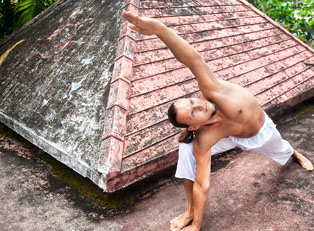History of Yoga
Yoga is an ancient form of mind-body therapy. It works by connecting the mind, breath and body through meditation, breathing techniques and physical movements. The word "yoga" appeared more than 2,000 years ago in Sanskrit and was practiced even long before the word itself was used. Its meanings include union and balance.
In its original form, yoga was a spiritual journey. However, for the millions of Americans who practice yoga today, it is simply a mean of exercise. Yoga first appeared in the United States in the 1890s through an expert named Swami Vivekananda. In the 1960s, other mind-body therapies gained popularity along with yoga. Today, you can find yoga classes almost anywhere from health clubs to yoga centers. Although many Westerners no longer practice the traditional spiritual elements, doctors often recommend yoga therapy to help reduce stress and improve flexibility.
Basic Principles of Yoga
Traditional yoga is considered a lifestyle that leads to spiritual enlightenment. The basic principles include 8 components. These are often illustrated as a tree with 8 limbs. These limbs include the following: Pranayama, or breathing; Asana, or postures; Yama, or restraint; Niyama, or healthy observances; Pratyahara, or sensory withdrawal; Dharana, or concentration; Dhyana, or meditation; and Samadhi, or higher consciousness. When combined, these basic principles lead to a better and more balanced overall well-being.
Based on this premise, various branches of yoga have developed. Several of the most common branches include bhakti, hatha, jnana and karma. Bhakti yoga focuses on taking all of the love felt in your heart and using it to see God in everything. Hatha yoga is the most commonly practiced branch in the United States. It focuses on balancing opposition in your life through physical poses, or Asanas. Jnana yoga uses meditation to seek wisdom and become one with God. Because Karma yoga believes that today's actions will affect tomorrow's circumstances, followers strive to create the best today possible.
Regardless of the branch of yoga you are interested in, all work to reduce stress through three methods. First, breathing techniques, known as pranayama, reduce oxygen consumption while also increasing blood flow. Focusing on your breath allows you to feel more focused and alert. The second method is postures, or asanas. These exercises provide a range of workouts from mild to intense. They help increase balance, strength and flexibility. The final method that all branches of yoga incorporate is meditation. Meditation allows the mind and body to relax. Additional benefits of meditation include lowering cholesterol levels, anxiety, chronic pain and blood pressure.
Poses in Yoga
Asanas, or poses, are an integral part of yoga. While some yoga poses are quite simple, others require immense strength, flexibility and balance. As of 2010, there are over 900 identified asanas. Many of these poses also have variations, so there are actually well over 900 poses. Whether a novice or an expert, poses should not create any discomfort in the body.
There are several traditional practices that should be a part of any yoga pose. First, no force or pressure should be used. Second, all movements should be performed slowly. Third, breathing should be controlled. Best results are achieved when the asana is accompanied by a specific pranayama, or breathing technique. And fourth, if you experience any stress, perform the corpse pose or the child pose.
Who Yoga is For
Yoga is for everyone. Yoga can help improve balance, strength and flexibility. Additionally, yoga can help you to reduce tension in your body and mind. In fact, benefits of yoga span the full spectrum of the human body including physiological benefits, psychological benefits and biochemical benefits. Many people experience a sensation of ease and lightness after completing a yoga session.
It is important to keep in mind, however, that the benefits of yoga are only achieved after consistent practice. Yoga is a skill that must be developed through time and dedication. You should also keep in mind that yoga is not competitive like most other athletic activities. Rather, yoga is learning about your body. Most likely you will be observing more than doing in your first few classes. This is an important skillset that cannot be rushed. With patience and hard work you will be sure to experience the benefits of yoga.



